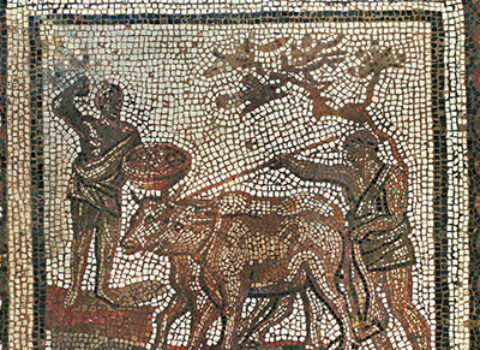The Luckiest Woman on Earth
Three people win the largest Powerball jackpot in U.S. history; Nathaniel Rich profiles a woman who won millions in the Texas lottery on four separate occasions.
Published in the August 2011 issue of Harper’s Magazine, “The Luckiest Woman on Earth” tells the story of Joan Ginther, a sixty-three-year-old woman who has won more than $20 million in Texas’s instant lottery. Read the full article here.
From a New York Times report, published January 14, 2015, on the outcome of the Powerball lottery.
The world’s biggest lottery jackpot of $1.5 billion will be a three-way split of $528 million each.
Winning Powerball tickets—with the numbers 4-8-19-27-34 and the Powerball number, 10—were sold in Chino Hills, Calif., a suburb of Los Angeles; Munford, Tenn., about 25 miles north of Memphis; and Melbourne Beach, Fla., which is on the Atlantic Coast southeast of Orlando.
The winners will divide a jackpot that, based on final ticket sales, is worth $1.586 billion in total.
The news on July 2, 2010—much like the news of the preceding eighteen months—was dreadful. The unemployment rate was approaching 10 percent, the Dow was down for the seventh consecutive day, and home sales were declining at a record rate. But on the bottom of the front page of the Corpus Christi Caller local section, there was an article with happier news: bishop native wins millions for 4th time. A sixty-three-year-old woman named Joan R. Ginther had won $10 million, the top prize in the Texas Lottery’s Extreme Payout scratch-off game. Ginther’s cumulative winnings now totaled $20.4 million.
Three of her golden tickets had been purchased in Bishop, Texas, a small, poor town about forty minutes southwest of Corpus Christi and two hours north of the Mexican border. The fourth ticket was bought in neighboring Kingsville. “She’s obviously been born under a lucky star,” said a Texas Lottery Commission spokesman, who added that they did not suspect any foul play. Ginther could not be reached for comment.
After the Associated Press picked it up, Ginther’s story was syndicated by hundreds of newspapers worldwide, under headlines like lottery queen and luckiest woman on earth. Websites devoted to the paranormal, the occult, and Christianity concluded that Ginther was a master of visualization techniques; that the constellations had been in perfect alignment; that the woman must have prayed really hard.
A four-time lottery winner did seem unlikely, but how unlikely was it really? The AP interviewed mathematicians. Their findings: the odds of such a thing occurring were one in eighteen septillion. This is what eighteen septillion looks like:
18,000,000,000,000,000,000,000,000
There are one septillion stars in the universe, and one septillion grains of sand on Earth. With onein- eighteen-septillion odds, it can be expected that a person should have Ginther’s good luck about once every quadrillion years. Since the sun will envelop our planet in just five billion years, it is unlikely that another earthling will repeat her success.
The AP story included several peculiar details about Ginther. Though her first winning ticket came in 1993, in a standard picksix lottery drawing, the last three came more than a decade later, in two-year intervals. She won $2 million in the spring of 2006, $3 million in the spring of 2008, and $10 million in the early summer of 2010. These last three were all scratch-off tickets. The article also mentioned that Ginther does not, in fact, live in Texas. Though she was born in Bishop, she has lived for many years in Las Vegas. Finally, it noted that before retiring, she had been a math professor, with a Ph.D. from Stanford. She specialized in statistics.
Ginther was called a “mystery woman,” but it was left at that. Other stories soon claimed the public’s attention. On July 23 a black bear in Larkspur, Colorado, broke into a Toyota Corolla, sat in the driver’s seat, defecated, honked the horn, then “drove” the car 125 feet until it crashed into a thicket. The next week a lobsterman in Narragansett Bay caught a yellow lobster—a onein- thirty-million phenomenon. And in mid-August, four sisters from the Chicago suburbs gave birth in four days; their obstetrician called the births “very unusual but wonderful at the same time.” The Luckiest Woman on Earth was old news. Americans moved on.
But not all of us. I found myself trying to visualize eighteen Earths’ worth of sand, and eighteen universes of stars. There are limits even to miracles.
I called a statistics professor, who said that Ginther’s odds of winning were significantly higher than one in eighteen septillion, but that what was even more likely, from a statistical standpoint, was that some sort of fraud had been perpetrated. A professor at the Institute for the Study of Gambling & Commercial Gaming at the University of Nevada, Reno, said, “When something this unlikely happens in a casino, you arrest ’em first and ask questions later.” “She must have some kind of scam working,” a casino surveillance expert in Las Vegas told me. “They need to lock her up. She would be on my blacklist.” I asked the director of another state lottery whether he believed that the Texas Lottery suspected no foul play. “You can bet on two things,” he told me. “One, they’re doing a serious investigation. Two, they ain’t going to let anyone find out about it.”
I drove to South Texas the next morning. I spoke with dozens of people in Bishop and in neighboring towns. I later interviewed every lottery expert I could find in the state: former Lottery employees, mathematicians, and a woman in the Dallas suburbs who has devoted the last eighteen years of her life to studying the Texas Lottery. I learned that there are only three possible explanations for what happened in Bishop. All three are exceedingly unlikely.
Read the full article here.





